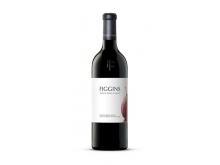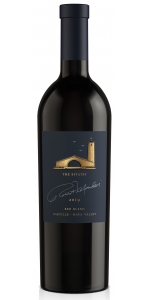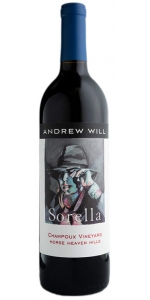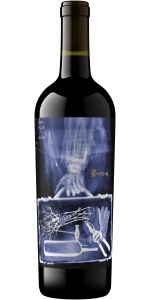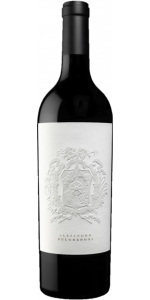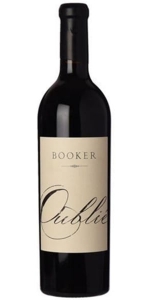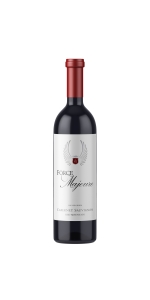Figgins Estate Red Wine 2019
6 bottles with free shipping for: $600.00
12 bottles with free shipping for: $1,140.00
| BUY MORE! SAVE MORE! | ||||||||||||||||||||
|
| Country: | United States |
| Regions: | Washington Washington (Walla Walla) |
| Winery: | Toil - Figgins Family |
| Grape Type: | Cabernet Sauvignon |
| Vintage: | 2019 |
| Bottle Size: | 750 ml |
Figgins Estate Red Wine is a blend of Cabernet Sauvignon, Petit Verdot & Merlot
Dark to the rim, with signature aromatic notes of ripe red and blue fruits, tanned leather, black olive, and lilac. The nose simply brings a smile. On the palate, if I had to describe the wine in one word it would be precision. The way the sweet fruit and dramatic length are braced by lively acidity and tannins aligns so perfectly that the wine is, quite simply, delicious.
Review:
Inviting aromas of vivid red fruit, fresh herbs and paprika. Full-bodied with juicy, fruit-soaked, fine tannins. Delightful. So much happening here. The fruit is plentiful and full of charming spice and herbal complexity. Very well balanced and long. Fresh. A blend of cabernet sauvignon, merlot and petit verdot. Best after 2024 but attractive now.
-James Suckling 96 Points
From the time my great grandparents arrived in Walla Walla in 1902, my family has achieved everything through meticulous hard work. In fact, the silhouette on the label of Toil Oregon is from a photo of my Great Uncle William Leonetti and my father planting the first Leonetti Vineyard in 1974.
Perhaps the biggest challenge of this endeavor is producing a wine that is the same level of quality that we have been producing at Leonetti Cellar for 40 years. It requires new learning, infinite patience, dedicated diligence, and a willingness to consistently toil in pursuit of perfection.
For many years, I have been enjoying Pinot Noir from around the world. I fell in love with how this varietal, especially from Willamette Valley, is a perfect complement to the dense, dark, masculine wines we produce here in the Walla Walla Valley. At its finest, Pinot Noir has such a lovely delicacy, perfume, and levity that it was just impossible for me not to try my hand at creating it.
Toil Oregon was created to acknowledge our past and my commitment to continue to lead my family in bringing you the finest of our efforts. I relentlessly strive to honor the trailblazers of the Willamette Valley and to add to their legacy in the same way newcomers to the Walla Walla Valley honor my father.
Robert Mondavi Winery The Estates Red Blend is made from 49% Cabernet Franc, 47% Cabernet Sauvignon, 4% Petit Verdot.
Robert Mondavi’s vision was to elevate Napa to the world stage. In celebration of his achievement, our Napa Tier wines are sourced from distinctive vineyards throughout the Napa Valley and truly emulate a classic Napa Valley style.
Aromas of blackberry, cherry, toasted almond, bay leaf and mocha. Luscious ripe cherry and cassis, with savory notes of dried herbs and toast. Rich, weighty, and mouth-coating, with classic fine To Kalon tannins.
Review:
This has a pretty fragrance of violets, green peppercorns, salted olives, blackcurrants and black raspberries. Creamy, salted dark chocolate and praline to follow. Medium-to full-bodied with fine-grained tannins. Delicious and superbly balanced. 50% cabernet franc, 47% cabernet sauvignon and 3% petit verdot.
-James Sucking 94 Points
The 2019 Red Blend Estate comes all from the To Kalon Vineyard and is close to an even split of Cabernet Franc and Cabernet Sauvignon. It's a clear step up over the base Red Blend and offers terrific, full-bodied aromas and flavors of darker fruits, dark chocolate, violets, and a kiss of spring flowers. With silky tannins, terrific balance, and outstanding length, it's going to evolve for 15 years or so.
-Jeb Dunnuck 94 Points
Andrew Will Winery Sorella 2019 is made from 80% Cabernet Sauvignon, 8% Merlot, 8% Cabernet Franc, 4% Petite Verdot.
Sorella means sister in Italian and was named after Chris Camarda late sister Jane Camarda. This first vintage was from 1994. This wine is made from 100% Champoux Vineyard fruit and represents the nature of the vineyard by highlighting the Cabernet Sauvignon, which is considered some of the best in Washington State. The picture on the label is a portrait of Annie Camarda (Chris’s late wife).
Review:
Flirting with triple digits, and perhaps the best Sorella yet, the 2019 Sorella explodes from the glass with a fantastic mineral essence that sways between dark red fruit tones, oak essence and freshly opened flowers. Medium to full-bodied, the wine is impeccably balanced with a silky-smooth mid-palate that bestows a stunningly beautiful wine with gobs of complexity and a ripe frame of glossy black raspberry and blackberry fruit tones. Unwinding across the finish, the wine unpacks gorgeous layers that seduce me for a second, third and fourth sip and finally begs me to finish the glass. Buy this ASAP!
-Wine Advocate 99 Points
Bootleg Red Wine Napa County is made from 53% Petite Sirah, 41% Merlot, 4% Cabernet Sauvignon, 1.4% Cabernet Franc, 0.6% Petit Verdot.
The 2019 Bootleg blends Petite Sirah, Merlot, Cabernet Sauvignon blend from several appellations within Napa. The result is a dark red crimson color with aromas of raspberry, black cherry, barrel spice and tobacco and mocha. On the palate the wine is fruit forward with round structured tannins leading to a long finish.
Review:
Moving to a darker expression, the 2019 Bootleg Red Blend pours an inky black hue and offers up aromas of pencil shaving, boysenberry preserve, and sweet tobacco. Full-bodied, with full, ripe tannins, it reveals notes of preserved black plum, crushed purple flowers, and turned soil.
-Jeb Dunnuck 92 Points
It is hard to imagine with the Lithology range receiving 298 points out of 300 for the three single-vineyard wines, that there could possibly be a wine above them. But there is, and it is our Estate wine. Blended several times very intently by masters of their craft Philippe Melka and Michel Rolland, this is the ultimate expression of our house’s work. Positive, full-bodied, and quite powerful, there’s the expected crème de cassis and blackberry from St. Helena Cabernets, with mineral, herb, subtle tobacco and vanilla, plum skins, and pie crust, purple flowers, forest-conifer notes, and very fine tannic structure. It is a magnificent, and magnificently elegant expression of this house, and when asked recently, Monsieur Rolland stated plainly to me, “oh yes indeed – this is the best one, the best yet…”
Review:
Pure perfection in Cabernet, the 2019 Cabernet Sauvignon Alejandro Bulgheroni is all varietal and comes two-thirds from Oakville with the balance from sites in St. Helena and Rutherford. Aged 20 months in 70% new French oak and put together by Philippe Melka and Michel Rolland, it has an incredibly pure, full-bodied, massive yet weightless style that I suspect couldn’t be achieved anywhere outside of Napa Valley. Cassis, blackberries, leafy herbs, lead pencil shavings, and tobacco leaf are just some of the nuances here, and it’s full-bodied, deep, and concentrated on the palate while maintaining an ethereal, seamless, utterly perfect balance between its fruit, alcohol, tannins, and acidity. As good as it gets, it needs just 2-4 years in the cellar and will evolve gracefully for at least 20-25 years.
-Jeb Dunnuck 100 Points
Booker Vineyard Oublie Red is made from 33% Syrah, 30% Grenache, 28% Mourvèdre, 5% Tannat, 4% Petite Sirah
Oublié's blend is always Grenache, Syrah and Mourvèdre – the California version of a Châteauneuf du Pape. The namesake is a play on the French term for "forgotten." Rhône varietals grow beautifully on the estate and Booker believes that they are far-too-often forgotten when you think of a California wine. Deep ruby/purple in color, this hearty expression of a Paso GSM boasts confident notes of boysenberry, licorice and cedar on the nose. On the palate, the taster is rewarded with lively flavors of raspberry coulis mingled with blonde roast coffee and chocolate ganache. For lovers of Mourvèdre, this vintage of Oublié will show off. It drinks bolder than prior vintages, mostly because the Mourvèdre was so special in '19.
Oublié is traditionally one of Booker's most food-friendly wines and should pair well with most dishes.
Review:
The 2019 Oublié is a blend of Syrah, Mourvèdre, Tannat and Petite Sirah with a medium ruby-purple color. The nose offers gregarious mixed berry preserves and accents of potpourri, mint and fragrant earth. The palate offers juicy appeal and powerful fruit with loads of spice and floral perfume, bursts of freshness and firm, pleasantly rustic tannins, finishing very long.
-Wine Advocate 97 Points
Force Majeure Cabernet Sauvignon Red Mountain is made from 100 percent Cabernet Sauvignon.
The estate Cabernet Sauvignon is grown primarily along the southwest ridge of the vineyard. The vines produce small berries with bountiful flavor, concentration and intensity, but also a good degree of finesse, excellent structure and layers of complexity that will continue to develop during extended bottle aging for those who want to cellar and age their wines. The wine is powerful, elegant, full-bodied.
Bottled unfined and unfiltered.100% free run
Pumpovers and punch-downs, up to 45 day macerations
Native yeast, 5 day cold soaks
22 months in 75% new French oak barrels
Fermented in concrete and stainless closed top tanks.
Review:
Another gem is the 2019 Cabernet Sauvignon Red Mountain Estate, a deep, concentrated, powerful Red Mountain Cabernet Sauvignon that I suspect will be up there with the legendary wines from this terroir. Beautiful cassis, graphite, lead pencil shavings, and damp earth notes give way to a full-bodied effort that has a liqueur of rocks-like minerality, flawless balance, building yet polished tannins, and a great finish. Hide bottles for 4-5 years, and it will evolve for 25-30 years if properly stored. Best After 2026.
-Jeb Dunnuck 98+ Points
- back
SALE!
Hugl Zweigelt Secco Rose is made from 100% Zweigelt
Despite its relative youth, Zweigelt is actually an Austrian classic. This variety was created in 1922, when Dr. Fritz Zweigelt crossed two grapes - St Laurent and Blaufränkisch. Originally, it was intended for the new variety to be called Rotburger, referring to the place where it was born, Klosterneuburg. But this name never took hold, and instead, Zweigelt was named after the man who was the key in its development.
Today, Zweigelt is the most widely planted red variety in Austria, growing in nearly 9% of this country's vineyards. It is a robust grape, highly resistant to dryness, frost and various diseases.
Lively, fruity bouquet of strawberry, cherry and floral aromas. Refreshing and beautifully balanced, this is a great wine to enjoy as an aperitif. This is a Secco for the whole day and the whole night
The wine is made of 100% Zweigelt grapes of 15-35 years old (25 years old in avarage).
The soil is mainly loam and loess.
It is made using the Charmat method and the wine is aged for 3 months on the lees in stainless steel tanks.
The wine is slightly filtered before bottling.
Drink by itself as an aperitif, it is also a great picnic or brunch wine and will be a good pick to celebrate any occasion.
Louis Roederer Cristal Vinotheque Edition Brut Millesime 1997 is made from Pinot noir (62%) and Chardonnay (38%).
Color
A bright and shimmering golden color, animated by an ultra-fine and swirling effervescence.
Nose
The bouquet is pure, precise and complex, mixing aromas of white flowers, almond, honey and nougat. Upon aeration, notes of red fruits and smoke are revealed, followed by warm and caramelized nuances reminiscent of macaroon, baked apples and tarte tatin.
Palate
Indulgent and velvety, the palate is rich while maintaining a great freshness thanks to a delicate effervescence. The flavors of candied Corsican citron stretch out on a finish marked by a chalky, powdery and iodized freshness, offering a dense texture and a serene length.
The property
Founded in 1776 in Reims, the Louis Roederer Champagne House has remained family-owned and independent. After more than 200 years of existence, the Louis Roederer House is still in the hands of the same family. Today led by Frédéric Rouzaud, who represents the seventh generation of the lineage, the Louis Roederer House embodies the excellence of Champagne wines around the world thanks to cuvées crafted like a work of art.
The vineyard
With nearly 241 hectares of vines, the Louis Roederer House draws its strength from its extraordinary vineyard, composed only of Grands and Premiers Crus in the Marne Valley, the Montagne de Reims and the Côte des Blancs. A true mosaic of terroirs, the Louis Roederer House's vineyard is divided into 410 plots that reflect all the diversity of the Champagne soils.
The wine
Cristal Vinothèque 1997 is made from three great vineyards known as "La Rivière", "La Montagne" and "La Côte".
The vintage
The spring of 1997, mild at first, was marked by an early bud break followed by severe frosts in April that damaged the vineyards of Verzenay and Verzy. After an early flowering in June, the rainy and cold weather until August favored the development of mildew and rot. Fortunately, the return of warm and sunny weather in August and September saved the vintage, with harvests taking place under radiant sunshine from September 15 to October 1.
Vinification and aging
Vinification is carried out in wood to the extent of 6%. Malolactic fermentation (16%). The cuvée was aged for 15 years on lees, 5 years on points and benefited from a rest of 4 years after disgorging. The dosage of this 1997 vintage champagne is 8 g/liter.
Review:
Intense nose of preserved lemons, salted yellow plums, walnuts, toast, salted caramel, roasted chestnuts and dried pineapple. Beautiful and complex, from 15 years, 5 years en pointe, before disgorgement in 2018. Delicious, salty toffee character. Soft, silky bubbles. Long and powerful. Thought-provoking. Unique. Will be launched in September 2022. Drink on release or hold.
-James Suckling 99 Points

